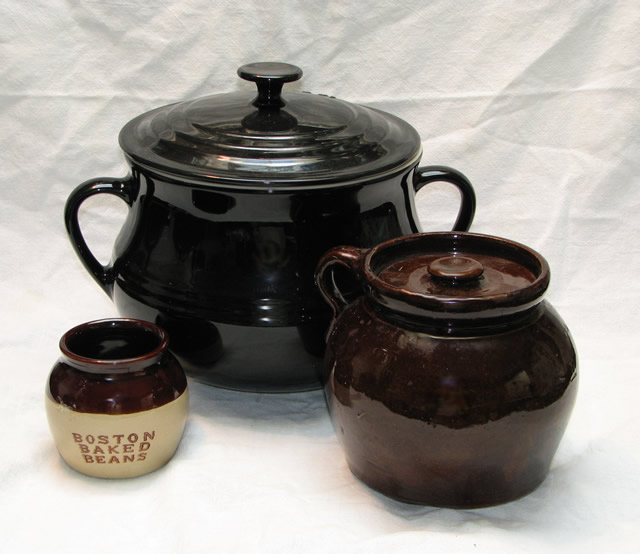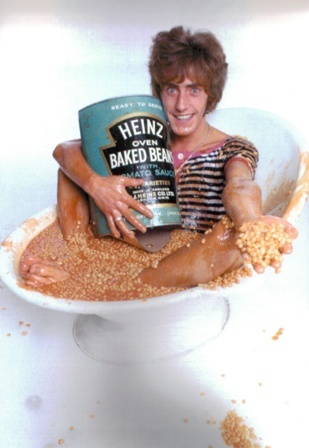I suggested yesterday Jane Grigson probably had little interest in cooking with beer. Today, I will mention two recipes where she did use it, excluding Welsh Rabbit-type dishes or beer in batter, which are stereotypical. In her Fish Cookery (1975), she gives a recipe for carp with beer, mentioning the Polish, German and Christmas associations with this dish.
The recipe is similar to those found elsewhere with its sweet-sour, fruity sauce. A honeyed spice cake figures in the recipe, a counterpart to the Flemish use of crumbled gingerbread with some beer dishes. Grigson was a proponent of using carp in general but preferred to cook it simply outdoors, in foil over charcoal with a splash of white wine and herbs. For this she advises to get a wild one which runs through good fresh water, to avoid the muddy taste (or you can soak the fish first).
The English food writer Mary Norwak, in a book on country cookery in the 70s, suggested ginger, included in Grigson`s carp-and-beer, as the defining spice for a pork roast coated in flour and bathed with beer. All over the northern belt of Europe, one notes such constant associations in the cooking.
The regions were much less hermetic than is often thought in this way. You can apply a similar analysis when looking at the alcoholic spirits in these areas – and the beer of course.
Grigson`s other recipe with beer I’ve found is in Jane Grigson’s Vegetable Book (1978). It is baked beans with molasses, sugar, duck, ginger again, and some other interesting elements. It happens to be online and you can view it at p. 87, here.
As she explains, it is from a book by American food author Evan Jones, whose mother had given him the recipe. She was a Canadian, of Welsh ancestry according to the New York Times obituary of Jones. She had lived in the Maritimes and ended in Minnesota where she married Jones’ father. I’d guess she had moved to Manitoba or Alberta first, a common migration pattern at the time, and then south to the U.S. Evan Jones was a noted authority on traditional American cooking, he died about 20 years ago.
Grigson explains that his recipe has a decided sweet element which links it to Boston baked beans and distances it from the French cassoulet. This makes sense as Boston beans, the signature of which is molasses, was known through New England and into the Maritime provinces in Canada. The New England states shared much with Nova Scotia and the other Maritime provinces due to a common coastal and trading culture and similar ethnic origins (Protestant English or other British).
Now, why would Grigson include this in her book? First, because the book didn’t deal only with British ways with vegetables, but also I think to establish a link with the old English dish of bacon and beans. The very English writer Elizabeth Ayrton had a recipe for beans and bacon in her The Cookery Of England (1974). She even calls for molasses and dry mustard, hallmarks of the American dish, yet makes no reference to Boston, New England or America. There is a good reason: the dish is English in origin, as so many dishes connected to New England.
There is a story of an English king visiting one of the Royal Docks, I believe at Woolwich, and sharing with the men their beans and bacon. And numerous older English cookery sources give a recipe for it, or the similar beans with salt pork (or peas with bacon or pork). They don`t refer to any American inspiration. In the early days, Britain gave lessons to the Colonies on cookery, not the other way around.
The pilgrims surely brought it to America, ditto the doughnut and many other foods considered quintessentially American.
Some may consider New England innovated by adding molasses. Given the basis of the dish, bacon and beans, goes back many hundreds of years in Britain and the sugar and molasses trade concerned Britain no less than its possessions in North America, I would doubt New Englanders liked the dish with molasses and no one in England did. The standard English way since the 1700s seems to have been with parsley and butter, but I haven`t checked exhaustively and would wager some people in Britain added a touch of molasses or other sugar if they had it. Otherwise, it doesn`t make sense Elizabeth Ayrton – a very knowledgeable authority on the history of English food – would call for it without making further comment.
In modern times, beans and bacon has faded from the British repertoire, at least as a set piece, while the Americans have kept it going. Both Ayrton and Grigson help us to remember its English roots. Interestingly, Ayrton advises to use half cider and half water if liked: this brings Jones’ and Grigson’s recipe even closer to England, as beer and cider are suggested as alternate mediums for numerous English dishes.
Readers who airily dismiss any idea of long-simmered pork and beans as English might reflect on the enduring popularity of tinned beans in England. Beans and toast, a popular quick meal and long associated with those of modest means, is an example. To the retort, no one eats it anymore, first I doubt that, second, how about the essential place beans has in the cooked U.K. breakfast, indeed with the … bacon invariably nearby? The folk memory retains very old associations, and perpetuates them in forms which a little thought can easily penetrate to their core.
And all brands of canned beans have sugar, I’m quite sure, some just more than others…
So it’s all related and it all ties in.
A last – or for now – association in Jane Grigson`s work with beer, albeit indirect: in the vegetable book, she has two pages on cooking hop shoots. She discusses the different ways they can be harvested and how to spot them in the country, even outside the hop gardens that is.
I can tell that she enjoyed a glass of beer, at least with certain dishes – she mentions its suitability with Alsatian sauerkraut, for example – but remain convinced beer was not a standby for her in the kitchen.
Note re images: the first image, of a bean pot typical of New England, is in the public domain, and was sourced here. The second image, of Roger Daltrey of The Who, was sourced from a news article on the rock star, here. A similar photo appeared on The Who`s 1967 album, The Who Sell Out. Both images are believed available for educational and historical use. All feedback welcomed.



Gary, I can assure any doubters that baked beans on buttered white toast continues to be a v popular dish in the UK. My sons (10 & 12) love them, especially after outdoor activities (invariably football) on a typically cool rainy day here in London. A blob of butter is the only addition needed as they are heated.
My local supermarket has half an aisle devoted to them in all sorts of combinations. The brand shown in the bath above is the considered the gold standard, others, including any offers of ‘gourmet’ or ‘artisan/home made’ versions found in trendy cafes are always rejected by the lads.
I am very glad to hear this Ben, thanks. Some things need to remain the same. Incidentally the young man in the bath of beans, Roger Daltrey, was just here in Toronto, still singing Who songs with Townshend, at 72. He can afford surely to eat whatever he likes but I’d hope he still enjoys beans on toast.
Gary
Gary.
Was an attempt at a joke 🙂
Interestingly, this photo is different from the one we all know.
Alan.
Right, well at the time he was a pop star but not too far from his working class roots – the point of the image of course, plus the band was spoofing radio ads for branded products on the record… The Mr. part came much later. 🙂
Gary
Gary.
Still can’t figure out why a Mr. “Roger Daltrey” would be lying in a bathtub full of beans……
Alan.
Alan, are you asking why did he pose that way on the album cover..
Gary